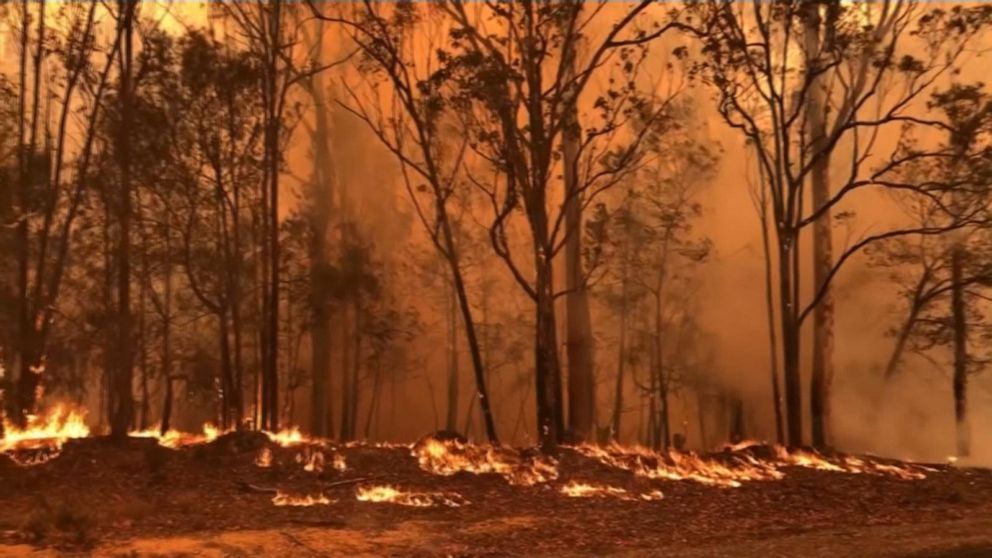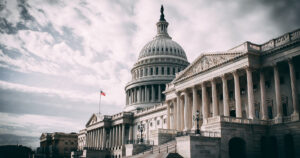
Fire threats eased in parts of southeast Australia on Sunday after a horror day of blazes that killed one man and forced thousands to evacuate, but authorities warned several fires were still burning at emergency levels and hot weather was set to return.
As the immediate danger passed, authorities began assessing the damage from the blazes that swept across the states of eastern Victoria and southern New South Wales (NSW) on Saturday.
Tens of thousands of homes remained without power as a large-scale military and police effort continued to provide supplies and evacuate people who have been trapped for days by the fires in coastal towns.
The Rural Fire Service said 150 fires remained active in the state, 64 of them uncontrolled.
“It’s not something we have experienced before,” NSW Premier Gladys Berejiklian said.
“The weather activity we’re seeing, the extent and spread of the fires, the speed at which they’re [moving], the way they are attacking communities that have never seen fire is unprecedented,” she said.
She said the extent of the bushfire season was the largest in living memory, “and many experts have been around much longer than I have, who fought fires and observed circumstances. All agree we’re in uncharted territory.”
The latest death occurred at Batlow in NSW, where a 47-year-old man died on Saturday night while defending the home of a friend from the flames. NSW police said the man was found unconscious in a vehicle and could not be revived.
A satellite image provided by NASA shows smoke billowing from fires raging on Australia’s southeast coast on Saturday [NASA via AP Photo]
Earlier, a father and son who were battling flames for two days died on a highway on Kangaroo Island, off South Australia state. Authorities identified them as Dick Lang, a 78-year-old bush pilot and outback safari operator, and his 43-year-old son, Clayton. Their family said their deaths left them “heartbroken and reeling from this double tragedy”.
“The weather conditions have improved in New South Wales and Victoria but there are still many fires raging and there’s a significant firefighting effort continuing,” Prime Minister Scott Morrison told a news conference on Sunday.
Morrison announced the government would set up a national bushfire recovery agency, headed by former Australian Federal Police Commissioner Andrew Colvin, which would provide support payments to small businesses and help repair damaged infrastructure.
The fires, which have been raging since September, have killed at least 24 people, burned about five million hectares (12.35 million acres) of land and been catastrophic for the country’s wildlife.
Reporting from Bateman’s Bay, Al Jazeera’s Jessica Washington said even with the reduction in temperatures and some rain, the fire risk remained high.
“The situation is still incredibly dangerous,” she said. “This is an issue, which will go on for some weeks ahead. There’s just been a town along the south coast between Victoria and New South Wales evacuated so it’s still a volatile situation.”
Experts say climate change has exacerbated the situation with many regions of Australia already bone dry from a three-year drought. Morrison has been criticised for his repeated refusal to say climate change is affecting the fires, instead deeming them a natural disaster.
For the first time in Australia’s history, 3,000 army, navy and air force reservists have been called up to join the battle against the fires. Morrison also committed almost $14m to lease four fire-fighting aircraft for the duration of the crisis.
But criticism of Morrison’s leadership continues. Some at the forefront of the fight said they had been caught off-guard by the prime minister’s decision.
Rural Fire Service Commissioner Shane Fitzsimmons, who is leading the fight in NSW, said he learned of the deployment of reservists through media reports.
“It is fair to say it was disappointing and some surprise to hear about these things through public announcements in the middle of what was one of our worst days this season with the second-highest number of concurrent emergency warning fires ever in the history of New South Wales,” he said.
Morrison was also forced to defend a video posted on social media on Saturday, which promoted the deployment of reservists and the government’s response to the wildfires.
The non-partisan Australia Defence Association said the video breached rules around political advertising.
“Party-political advertising milking ADF [Australian Defence Force] support to civil agencies fighting bushfires is a clear breach of the non-partisanship convention applying to both the ADF and ministers/MPs,” the association said.
In a tweet, Morrison said: “The video message simply communicates the Government’s policy decisions and the actions the Government is undertaking to the public.”













